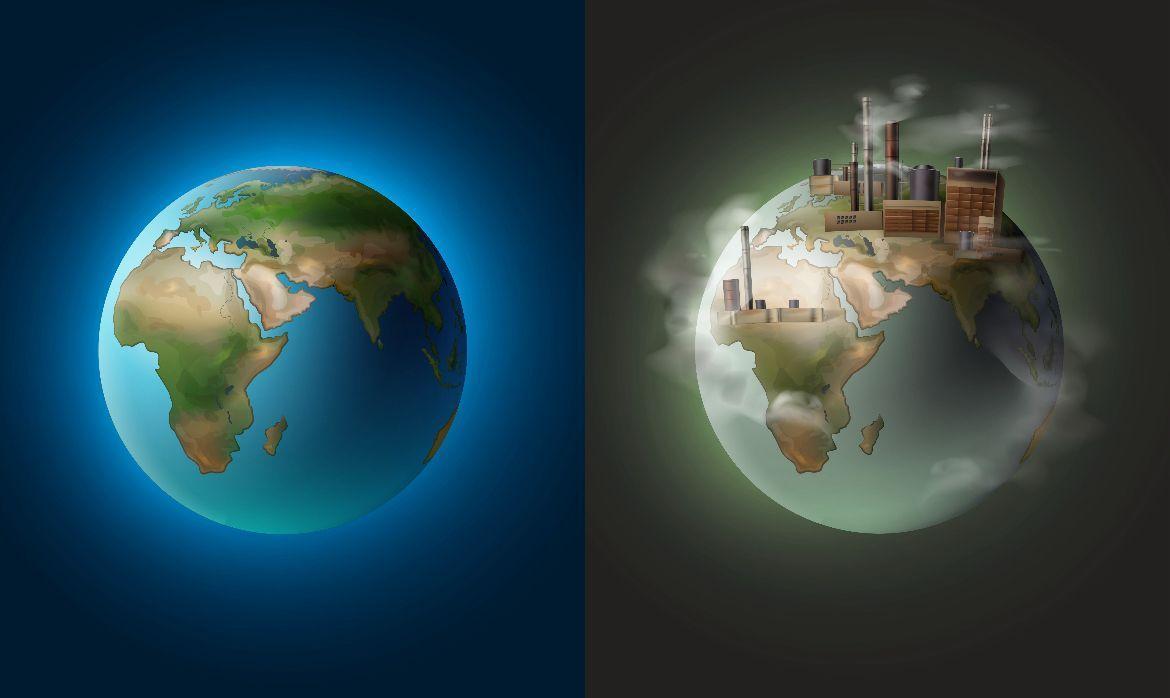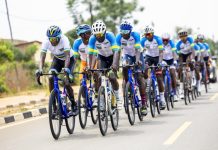Africa-Press – Rwanda. Climate change is no distant threat lurking beyond our shores—it is here, reshaping the lives and livelihoods of ordinary people across Liberia and West Africa with every rising tide and failing harvest. Rainy seasons arrive late, flooding becomes more frequent, sea levels continue to rise, and homes slip into the sea. Across the world, headlines warn of temperatures getting hotter every year.
In this explainer series, we cut through the politics and technical jargon to confront the reality on the ground: how shifting weather patterns are already undermining food security, fueling displacement, and testing the resilience of communities long accustomed to hardship. From the coastal towns losing land to the sea to farmers watching the rains betray them, we investigate what’s at stake—and what can still be saved. Our first story asks: What is climate change? What changes is it causing? And what can be done to stop it?
Climate change is a simple term to explain a complex scientific phenomenon. Thankfully most of us only need to understand the basics: Climate change is the long-term alteration of Earth’s climate system, a shift driven mainly by the build-up of heat-trapping gases in the atmosphere. While natural events such as volcanic eruptions or solar cycles can influence the climate, scientists overwhelmingly agree that human activity has become the dominant force behind today’s rapid changes.
“The main cause of climate change is the burning of fossil fuels, coal, oil, and natural gas,” says Arthur Becker, a climate change expert at Liberia’s Environmental Protection Authority, in an email.
According to Becker this process releases carbon dioxide (its scientific name is CO2) and other so called “greenhouse gases”, which act like an invisible blanket around the earth, trapping heat that would otherwise escape into space. The result: rising global temperatures, shifting weather patterns and big impacts for ecosystems and humans.
The evidence is visible everywhere. 2024 was the warmest year on record. Ice sheets in Greenland and Antarctica are melting quickly, driving sea levels higher and threatening to engulf coastlines, including Liberia’s.
Heat waves are becoming more frequent and more dangerous. In Liberia, World Bank projections show that by mid-century Montserrado County alone could face about 118 additional hot days each year with temperatures above 30°C, compared to the 1995–2014 baseline. This means Liberians will experience longer, harsher periods of extreme heat than ever before.
“Climate change is already intensifying extreme heat, coastal erosion, flooding, and unpredictable rainfall in West African countries like Liberia, threatening agriculture, fisheries, and vulnerable coastal communities,” says Becker.
Storms are also intensifying, fueled by warmer oceans that provide more energy for hurricanes and typhoons. That has fueled flooding which, in recent years has forced hundreds of thousands of Liberians from their homes without warning. Farmers are struggling as rainfall patterns shift, while fishermen report that warmer waters are reducing their catches. Even wealthier countries, once shielded by strong infrastructure, now face record-breaking disasters that stretch emergency systems to the limit.
In Liberia farmers say rains arrive earlier or later than expected disrupting planting seasons. Coastal communities such as West Point and New Kru Town are losing land to rising seas. Flooding displaced about 100,000 people in 2024.
During last year’s rainy season, Rivercess County experienced severe flooding that destroyed homes and businesses, including Princess Nanna’s provision shop. Photo by Eric Opa Duoe.
In rural areas, reduced income opportunities are pushing many toward charcoal production, which involves cutting down trees. But cutting down trees removes forests that absorb carbon dioxide, making the problem worse.
Forests are one of the best natural tools we have to fight global warming. They soak up huge amounts of carbon from the air, help control our weather, keep our water flowing, and give animals a safe place to live.
Liberia has some of the biggest and most important tropical forests in West Africa. But when these forests are cut down or burned, all the carbon stored in the trees and soil goes back into the air. That makes the planet warm even faster. Cutting down trees also risks destroying Liberia’s “biodiversity” – a fragile mix of plants, animals and bacteria. Once the balance is upset forests can quickly turn to unfertile savannahs that will no longer support food and animals.
To protect our future, experts say Liberia must guard the forests we still have, repair the land that has been damaged, and use forests in smarter, sustainable ways. Our climate—and our children’s future—depend on it.
Experts Say Every Human Has Role to Play But Biggest Emitters Must Do More.
Liberia has pledged to do its part. The country aims to cut emissions by 64 percent by 2030, focusing on protecting forests, advancing climate-smart agriculture, improving energy and transport systems, and reducing waste. But experts say, overall, there is little Liberia can do to make a major impact on climate change. Liberia’s contribution to fossil fuels in tiny. Africa as a whole contributes only 4 percent. It’s the biggest emitters – the United States, China, India and Europe – which have generated immense amounts of greenhouse gases through industrialization over the last 100 years, that are responsible for climate change. Cutting emissions in in their hands.
“I don’t think we’d want to hammer our people on the head as if they’re responsible for the climate crisis when people are burning fossil fuels, many vehicles, all the stuff they’re doing,” says Urey K. Yarkpawolo, executive director of Liberia’s Environmental Protection Agency. “The United States is the number one polluter per capita – per capita means per individual – so individual pollution the United States comes number one. The biggest emitter per country is China.”
A coastal defense project in Buchanan.
Liberia’s focus is on adapting to the changing climate with a range of projects designed to build people’s resilience, from coastal defense projects that will block rising seas, to early weather hazard warnings about flooding, to programs designed to increase farmers information about temperatures, rainfall and new crops that are climate resilient.
“We don’t want to hammer our people on the head,” says Yarkpawolo. He highlighted another project that is helping people adapt to cleaner cooking that doesn’t use firewood.. “If you say we shouldn’t cook with fire coal today, what else we have? That’s why we’re trying to support them into getting efficient cooking. But that’s to scale that up so more people benefit from it.”
Liberia has joined with other nations who are most vulnerable to climate change in speaking out to get the money they need to protect their people. At major world meetings, they are asking high-polluting countries to keep their promises and provide funds for adaptation through a “Loss and Damage fund”. Their goal is simple: make sure the countries that created the most emissions help those that are suffering the most from climate change.
COP30 gets underway. Photo courtesy of ABC News
At the current COP30 being held in Brazil, negotiators are debating how the new Loss and Damage fund should work and who should pay into it. Countries have pledged less than $1USbillion to the fund—far below what climate-vulnerable nations say is required. Experts estimate developing countries will need at least $100 billion every year by 2030, with some analyses suggesting costs could reach $128–937 billion annually as climate disasters intensify.
So far, the small pool of pledges is only enough to get the fund running, not to meet the scale of flooding, storms, and sea-level rise already hitting frontline countries. Vulnerable nations say the gap shows why high emitters must move from symbolic contributions to long-term, reliable financing. The negotiations remain tense, but vulnerable countries say the stakes are too high for the world to delay real action any longer.
Protestors at COP30 demanding accountability from the biggest emitters Credit: CNN
In addition to helping those most impacted, experts say the biggest emitters must cut emissions. One key step is reducing the release of greenhouse gases by expanding renewable energy—sources like solar, wind, and hydropower – that do not pollute the air. Scientists also point to the need for cleaner transportation systems, stronger protection of forests which absorb carbon, and new technologies that can pull carbon out of the atmosphere. In 2015, nearly every nation signed the Paris Agreement, promising to keep global warming well below 2°C and to aim for 1.5°C. That half-degree difference could determine whether fragile ecosystems such as coral reefs and Arctic sea ice survive, and whether millions of people are spared from the most dangerous climate impacts.
In recent years that goal has been all but abandoned as cuts have missed targets. The challenge now will be to keeping to 2°C. Investment in renewable energy is increasing and some promising practices like climate-smart farming and reforestation are spreading, but fossil fuels still supply more than 80 percent of global energy. The decision by U.S. President Donald Trump to withdraw from the Paris agreement and abandon a range of emissions reductions plans put in place by President Joe Biden will not help. But experts point to exciting developments in China where green energy technology is surging.
But just making the funding available in not enough. Governments have to follow requirements to access them and make smart decisions. The Weah administration left nearly forty million dollars in projects funded by the Green Climate Fund stalled because of mismanagement and failure to meet the fund’s requirements.
For individuals, the problem may seem overwhelming, but experts stress that choices matter. The way we travel, what we eat, how we invest, and, especially, who we elect, contribute to the bigger picture. Climate change is global in scale, but its solutions are rooted in countless local decisions.
An electric car charges at an electrical socket on a neighborhood street
Experts warn that climate change is here, reshaping our world in real time. The real question is not whether governments, global emitters and citizens will act, but how quickly, and whether their efforts will be bold enough to prevent the worst outcomes scientists warn are coming. For Liberians, the answer will determine whether the coastal communities survive rising seas, whether farmers can keep feeding their families, and whether future generations inherit a safer, more stable country.
For More News And Analysis About Rwanda Follow Africa-Press






